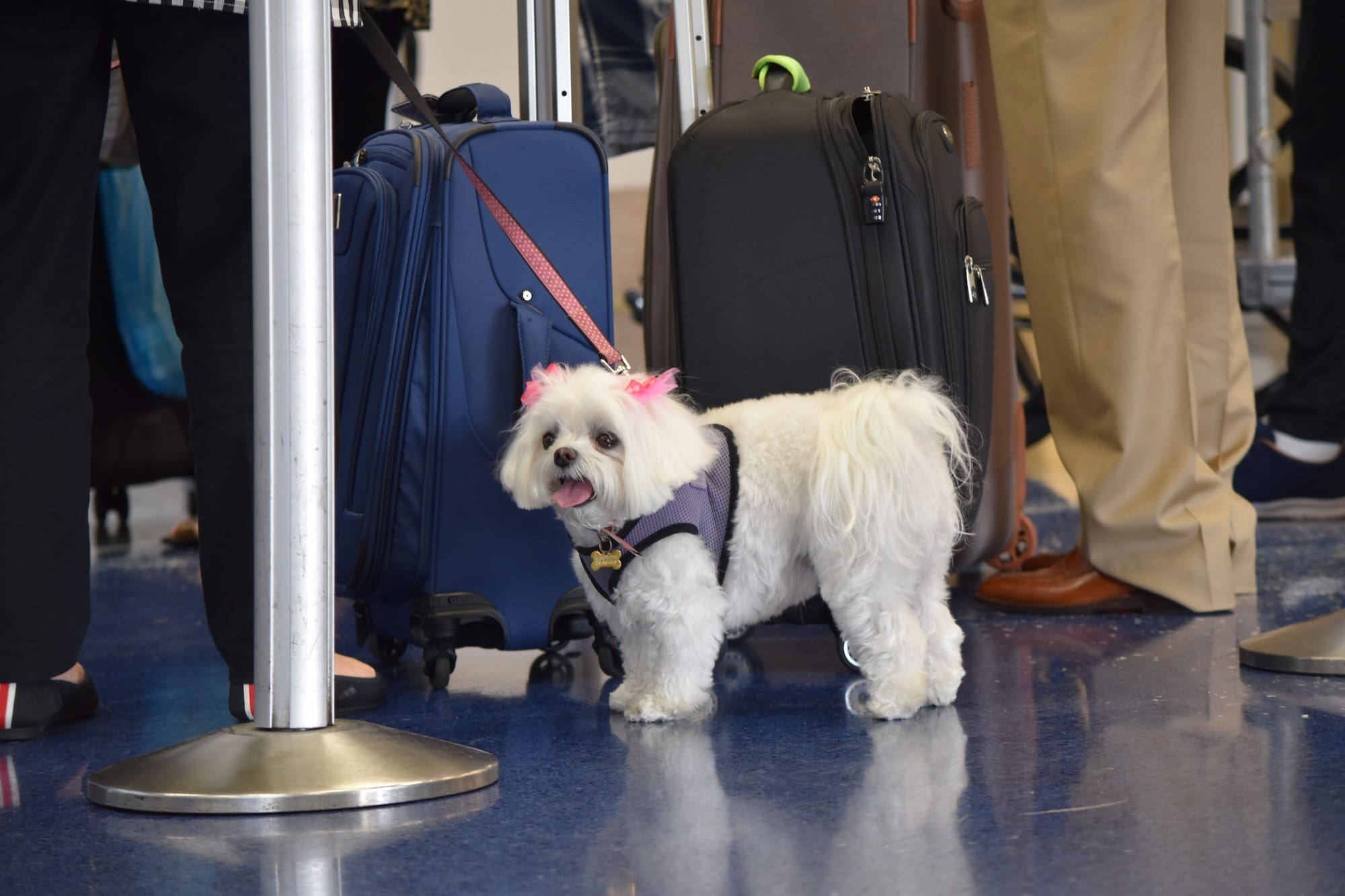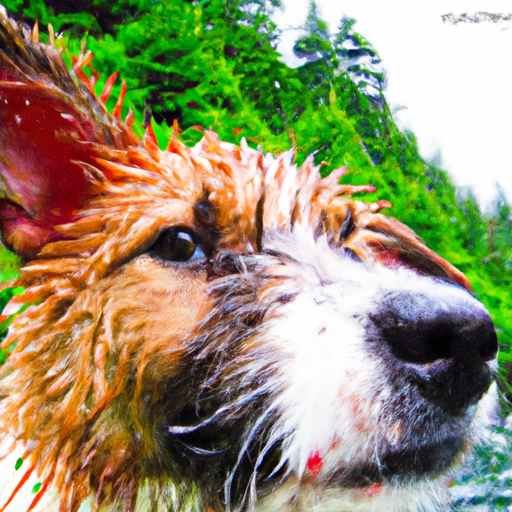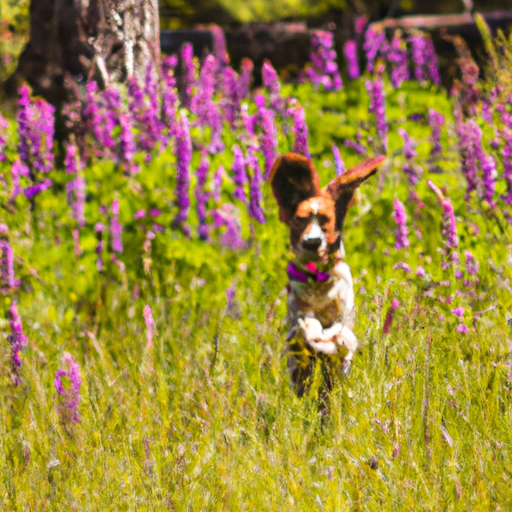Are you planning a trip with your furry companion? In our article, “Traveling Safely With Your Adult Dog: Tips and Tricks,” we provide you with essential advice to ensure a smooth and secure journey. Whether you're embarking on a road trip or flying to your destination, these tips will help you navigate the challenges of traveling with your adult dog, making it a stress-free and enjoyable experience for both of you. From choosing the right crate to packing necessary supplies, we've got you covered. So sit back, relax, and get ready to embark on an adventure with your four-legged friend!
Choosing the Right Transportation Method
When it comes to traveling with your beloved furry friend, choosing the right transportation method is crucial. You want to ensure that your dog feels comfortable and safe throughout the journey. Let's explore the three popular options: flying, driving, and taking a train/bus with your dog.
Flying with your dog
Flying can be a convenient way to travel long distances with your dog. However, it is essential to consider your dog's size, breed, and comfort level before opting for air travel. Some airlines allow small dogs to travel in the cabin with you, while others require them to be in a crate in the cargo hold. It is important to research airline policies and choose a reputable carrier that prioritizes the well-being of pets.
Driving with your dog
For shorter trips or if you prefer the flexibility of having your dog with you at all times, driving can be an excellent option. It allows you to control the environment and make necessary stops along the way. Before hitting the road, ensure your dog is comfortable with car rides and take measures to ensure their safety, such as using a seat belt or harness specifically designed for dogs.
Taking a train/bus with your dog
Public transportation can be a convenient mode of travel that allows you to relax and avoid the stress of driving or flying. Some train and bus companies allow dogs on board, but there may be certain restrictions or requirements. It is essential to check with the specific transportation provider, ensure your dog is well-behaved and comfortable being in close quarters with other passengers.
Preparing for the Journey
Before embarking on any journey with your dog, it's important to take certain steps to ensure a smooth and stress-free experience for both of you. These include a health check-up and vaccinations, obtaining necessary travel documents, and packing essential items for your dog.
Health check-up and vaccinations
Schedule a visit to your veterinarian well in advance of your trip to ensure your dog is in good health to travel. The vet can provide necessary vaccinations and conduct a general check-up to ensure your dog's well-being. Additionally, if you are traveling internationally, there may be specific requirements for vaccinations and health certificates, so be sure to research and comply with all regulations.
Obtaining necessary travel documents
Depending on your destination, you may need to obtain specific travel documents for your dog. These may include a health certificate, proof of vaccinations, or even a pet passport. Research the requirements of your destination and allow sufficient time to gather all necessary documents to avoid any last-minute hassles.
Packing essential items for your dog
Just like you would pack your own essentials for a trip, it's important to pack essential items for your dog. These may include food, water, bowls, leash, collar with a proper ID tag, waste bags, any medication, and a familiar blanket or bed. These items will provide comfort and familiarity for your dog while on the journey.
Ensuring Comfort and Safety during Travel
No matter which transportation method you choose, ensuring your dog's comfort and safety should always be the top priority. Here are some tips for accomplishing this during travel.
Using a secure and appropriate crate or carrier
If flying or driving, it is important to use a secure and appropriately sized crate or carrier for your dog. Make sure the crate or carrier meets airline or vehicle safety standards and allows enough room for your dog to stand, turn around, and lie down comfortably. Familiarize your dog with the crate or carrier before the trip to alleviate any anxiety they may have.
Providing comfort inside the crate or carrier
To make the crate or carrier more comfortable for your dog, add some bedding and toys that they are familiar with, as well as a piece of clothing that smells like you. This will provide a sense of security and familiarity during the journey. Additionally, consider covering the crate or carrier with a lightweight blanket to create a cozy den-like environment.
Using seat belts or harnesses in vehicles
If driving, it's important to secure your dog using a seat belt or harness specifically designed for dogs. This will not only keep them safe in case of sudden stops or accidents but also prevent them from roaming around and distracting the driver. It's important to never leave your dog unattended in a vehicle, especially in hot weather, as it can quickly become dangerous.
Managing Your Dog's Anxiety and Motion Sickness
For some dogs, travel can trigger anxiety or motion sickness. It's essential to take measures to make the journey as comfortable and stress-free as possible for your furry friend.
Introducing your dog to travel gradually
If your dog is not accustomed to traveling, it's advisable to gradually introduce them to the experience. Start with short car rides or trips to nearby places that they enjoy. This will help them become more comfortable with the idea of traveling and reduce anxiety. You can gradually increase the duration and distance of the trips as your dog becomes more accustomed to it.
Using calming aids and supplements
There are various calming aids and supplements available that can help alleviate anxiety and motion sickness in dogs. These may include pheromone sprays, natural supplements, or even prescribed medications from your veterinarian. Consult with your vet to determine the most suitable option for your dog and follow the recommended dosage.
Feeding and hydrating your dog properly
Avoid feeding your dog a large meal right before travel, as it can increase the chances of them experiencing motion sickness. Instead, offer a light meal a few hours before the journey. It's also important to keep your dog properly hydrated during travel. Offer small amounts of water at regular intervals, ensuring they don't drink excessively, which can lead to discomfort and more frequent bathroom breaks.
Keeping Your Dog Entertained and Engaged
Long journeys can sometimes be boring for both you and your dog. To keep their spirits up and minimize restlessness, it's important to provide them with entertainment and engage in activities that keep them mentally and physically stimulated.
Bringing favorite toys and familiar scents
Pack your dog's favorite toys, chew bones, or interactive puzzles to keep them entertained during the journey. These familiar items will provide comfort and mental stimulation. Additionally, bringing along a blanket or clothing with your scent can help soothe your dog during the journey.
Engaging in interactive play during breaks
Take regular breaks during the journey to allow your dog some time to stretch their legs and engage in interactive play. Tossing a ball, playing a game of tug-of-war, or practicing basic commands can help burn off excess energy and keep them mentally stimulated.
Offering treat-dispensing puzzles or toys
Consider using treat-dispensing puzzles or toys to offer mental stimulation and keep your dog occupied during the journey. These toys require problem-solving skills and can keep your dog entertained for longer periods. Make sure to use treats that are appropriate for your dog's diet and avoid any choking hazards.
Planning for Regular Breaks and Exercise
Dogs, just like humans, need regular breaks for bathroom breaks and exercise. It's important to plan for these breaks and provide opportunities for your dog to stretch their legs and relieve themselves.
Researching dog-friendly pit stops
Before embarking on your journey, research and identify dog-friendly pit stops along your route. Look for rest areas, parks, or other designated dog-friendly areas where your dog can safely stretch, sniff, and relieve themselves. Planning these stops in advance will help you avoid any last-minute struggles to find suitable places.
Taking frequent bathroom and stretching breaks
Make sure to take regular breaks, especially for long journeys. Dogs usually need bathroom breaks every few hours, so plan for these stops accordingly. In addition to bathroom breaks, allocate some time for your dog to stretch their legs, move around, and burn off excess energy. This will help them stay comfortable and more settled during the journey.
Providing exercise opportunities during layovers
If you have layovers during your journey, take advantage of the extra time to provide your dog with some exercise. Many airports have designated pet relief areas where your dog can take a quick walk or have a bathroom break. Use this time to let your dog stretch and move around before continuing the journey.
Finding Dog-Friendly Accommodations
When traveling with your dog, it's important to plan ahead and find accommodations that are pet-friendly. Not all hotels or rentals allow dogs, so it's essential to research and make appropriate arrangements beforehand.
Researching pet-friendly hotels or rentals
Many hotels, motels, and vacation rentals are pet-friendly and welcome dogs. Research and make reservations at establishments that have a reputation for being accommodating to dogs. Look for amenities such as green areas, walking trails, or nearby parks to ensure your dog gets adequate exercise and outdoor time during your stay.
Informing accommodations about your dog's requirements
When making reservations, be sure to inform the hotel or rental about your dog's size, breed, and any specific requirements they may have. This will allow them to allocate a suitable room or accommodation for you and your dog. Additionally, inquire about any additional fees or restrictions they may have for bringing a dog along.
Checking for nearby parks and walking areas
If possible, choose accommodations that are near parks or walking areas. This will provide convenient opportunities for you to take your dog for walks or allow them to explore nature. Dogs thrive on outdoor time and having access to these spaces will make their stay more enjoyable and help burn off excess energy.
Food and Water Management on the Go
Proper food and water management are essential aspects of traveling with your dog. Here are some tips to ensure your dog stays well-nourished and hydrated throughout the journey.
Pack enough dog food and treats for the journey
It is crucial to pack enough of your dog's regular food and treats for the entire journey. Sudden diet changes can upset your dog's digestive system, so sticking to their regular diet will help maintain their overall well-being. Consider portioning meals and treats into pre-portioned bags for easy access and feeding on the go.
Bringing collapsible bowls for water and food
Collapsible bowls are a convenient item to have during travel. They take up minimal space in your bag and can be easily expanded for your dog's water or food needs. Whether you're in an airport, rest stop, or park, having a collapsible bowl allows you to provide your dog with water and food wherever you are.
Maintaining a regular feeding schedule
Try to maintain your dog's regular feeding schedule as much as possible. This will provide them with a sense of routine and familiarity during the journey. If you need to make adjustments due to travel constraints, do so gradually to minimize any potential digestive issues. Be mindful of portion sizes to avoid overfeeding, especially if your dog is not as active during the journey.
Dealing with Emergencies or Health Issues
As a responsible dog owner, it's crucial to be prepared for emergencies or health issues that may arise during travel. Here are some essential steps to take to address any unforeseen situations.
Having a copy of your dog's medical records
Before you embark on your journey, make copies of your dog's medical records, including vaccination records, any chronic conditions, and medication information. In case of emergencies, having these records readily available will assist veterinarians in providing the best care for your dog.
Knowing local veterinary hospitals along the travel route
Research and have a list of veterinary hospitals or emergency clinics along your travel route. You never know when you may need immediate veterinary assistance, so it's important to be aware of the closest options. Save their contact information on your phone or write them down for easy access in case of emergencies.
Recognizing signs of distress or illness
During travel, it's essential to monitor your dog closely for any signs of distress or illness. These may include excessive panting, vomiting, diarrhea, lethargy, or any unusual behavior. If you notice any concerning symptoms, it's important to seek veterinary attention promptly to address the issue and ensure your dog's well-being.
Maintaining Routine and Familiarity
Dogs thrive on routine and familiarity, and it's important to maintain these aspects as much as possible during travel. This will help reduce anxiety and make the journey more comfortable for your furry friend.
Sticking to established routines during travel
Try to stick to your dog's established routines as much as possible. This includes meal times, bathroom breaks, exercise, and playtime. Maintaining these routines will provide a sense of familiarity and security for your dog, helping them feel more at ease during the journey.
Bringing familiar bedding and blankets
To provide a sense of comfort and familiarity for your dog, bring along their familiar bedding and blankets. The scent of their usual sleeping area will help them feel more relaxed and at home, even in a new environment. The familiar scent will also offer reassurance and reduce anxiety.
Providing plenty of love and reassurance
Above all, shower your dog with plenty of love and reassurance during the journey. Dogs rely on their human companions for emotional support, and your presence and affection will go a long way in keeping them calm and happy. Take breaks to cuddle, play, and reaffirm your bond with your furry friend throughout the journey.
Traveling with your adult dog can be a rewarding experience for both of you. By choosing the right transportation method, preparing diligently, ensuring comfort and safety, managing anxiety and motion sickness, providing entertainment and exercise, finding dog-friendly accommodations, managing food and water, and being prepared for emergencies, you can make your journey together enjoyable and stress-free. Remember, your dog's well-being is a top priority, and with the right preparations and precautions, you can embark on many memorable adventures together.






